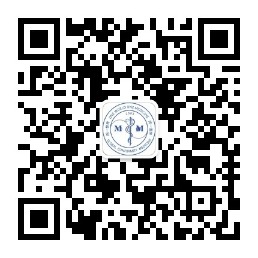目的探讨 18F FDG PET/CT显像学特征在朗格汉斯细胞组织细胞增生症(LCH)分型及疗效评价中的价值。方法回顾性分析经病理证实的18例朗格汉斯细胞组织细胞增生症患者的18FFDG PET/CT显像资料,分别记录病灶的结构特征及葡萄糖代谢特征。结果9例患者为EGB组,9例患者为LS组。EGB组患者化疗前的SUVmax值(7.4±0.5)明显高于LS组SUVmax(2.4±1.4)。11例患者化疗前后均行PET/CT检查,化疗前SUVmax(4.5±2.7),化疗后SUVmax(1.4±1.1),两组比较(t=5.044,P=0.001<0.05),差异有统计学意义。结论化疗后SUVmax明显下降,PET/CT全身显像对朗格汉斯细胞组织细胞增生症的分型及化疗疗效评价有重要的作用。
当前位置:首页 / 18F-FDG PET/CT 在朗格汉斯细胞组织细胞增生症中的应用价值▲
论著
|
更新时间:2015-03-31
|
18F-FDG PET/CT 在朗格汉斯细胞组织细胞增生症中的应用价值▲
Application value of 18FFDG PET/CT in patients with Langerhans’ cell histiocytosis
微创医学 201401期 页码:28-30,69
作者机构:(广西医科大学第一附属医院PET/CT部,南宁市530021)
基金信息:(广西医科大学第一附属医院PET/CT部,南宁市530021)▲基金项目:广西自然科学基金(合同号:桂科自0640124)△广西医科大学研究生学院2011级影像医学与核医学专业硕士研究生。
- 中文简介
- 英文简介
- 参考文献
ObjectiveTo explore the radiographic characteristics of PET CT in patients with Langerhans′ cell histiocytosis(LCH). MethodsThe radiographic data of PET CT of 18 patients with LCH were analyzed retrospectively, and structural and glucose metabolic features of the lesions were recorded. ResultsPatients were divided into EGB group or LS group, each included 9 patients. SUVmax of LS group before chemotherapy was obviously higher than that of EGB group (7.4 ±0.5 vs 2.4 ±1.4, P=0.005).Among 18 patients, 11 patients underwent PETCT imaging test both before and after chemotherapy, and their pretreatment SUVmax was significantly higher than that of post treatment(4.5 ±2.7 vs 1.4 ±1.1,P=0.001). ConclusionAfter chemotherapy, SUVmax of patients with LCH greatly decreases. Whole body image of PET/CT plays an important role in the grouping and the chemotherapeutic effectiveness evaluation of LCH.
- ref




 注册
注册 忘记密码
忘记密码 忘记用户名
忘记用户名 专家账号密码找回
专家账号密码找回 下载
下载 收藏
收藏
